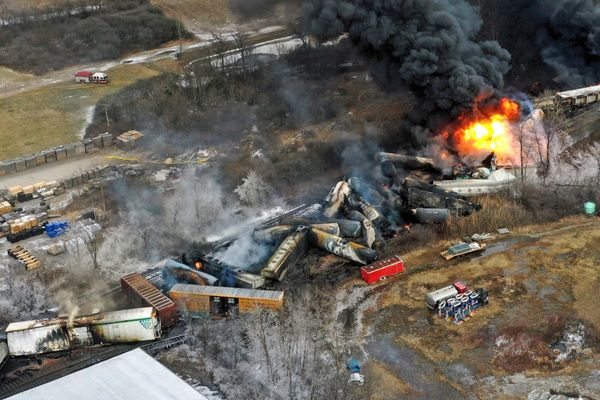
Last year Wairoa, a small farming community on New Zealand’s east coast, was forced to close its only retirement home. The facility was badly damaged in Cyclone Gabrielle and the cost to repair it, along with the risk of future flooding, was deemed too high.
The town was already struggling before the cyclone hit a year ago. Its housing stock was poorly built and in short supply. The disaster damaged one-third of its 1,500 homes, leaving many beyond repair. Some residents have moved back into damaged homes and are making do without running water, working bathrooms and, in some cases, walls. Many in the town feel frustration over the pace of the recovery, with hundreds estimated to be still living in temporary accommodation.
“There is definitely a feeling of being forgotten,” says Lewis Ratapu, general manager of Tātau Tātau o Te Wairoa Trust, a group that is helping Wairoa rebuild.
“We know the media moves on to the next thing and Wairoa is so isolated, things go under the radar.”
Wairoa is one of many areas still trying to rebuild homes, businesses and lives, one year after the disaster. The cyclone killed 11 people and marked the worst storm to hit the country in a century. About 1,600 homes across New Zealand remain uninhabitable while authorities determine what should be repaired, and what should be abandoned. There is a backlog of roads and bridges awaiting repairs. Questions linger over the country’s infrastructure resilience and its emergency response to future weather events.

Dr Nick Wilson, a public health professor from the University of Otago, is pushing for a national inquiry into the cyclone’s impact and New Zealand’s emergency response.
A review of the much-criticised response in Hawke’s Bay – which covers Wairoa – has begun. An inquiry has been completed into the 400,000 cubic meters of logging debris that accompanied flood waters, finding that a buildup of logs in waterways increased flood risk while endangering lives and amplifying destruction to properties.

Dr Wilson says the need for reviews is pressing as the incidence of powerful storms is likely to increase.
“These cyclones are going to be more common and more severe … so New Zealand really needs to up its game in terms of preparing for them,” he says.
Recovery costs from the cyclone, the most expensive weather-related event in New Zealand’s history, is projected to reach $14.5bn, according to the Public Health Communication Centre. It also exposed the vulnerability of New Zealand’s infrastructure to climate change.
“Various key bits of infrastructure —water pumping stations and sewage pumping stations – that were in floodplains were easily damaged so that needs to be addressed,” says Wilson, calling the cyclone’s fallout a “long shadow.”
The government, elected last October, has said it will create a national infrastructure agency and committed an additional $1.2bn for more resilient infrastructure in regional areas.

But for many across New Zealand, the damage caused by severe weather is still frustrating daily life in their communities.
Cyclone Gabrielle caused a global record of about 850,000 landslides across the country, causing havoc to New Zealand’s road network. In Auckland, a handful of roads remain closed and more than two dozen are only partially open due to twin disasters: the cyclone and severe flooding that hit two weeks earlier.
A slip brought the road into Piha, a surf beach in the largest city of Auckland, down to a single lane. The road was fixed ten months later, only weeks before the summer holiday traffic began at Christmas. The repair was a small step toward normalcy for the dozens of residents in the area still out of their homes. One resident, 51-year-old Nina Mardell, is yet to be notified if she can live in her home again after a slip pummelled her neighbour’s property.
“The thing that scares me is not being able to stay in my community and that is really daunting,” she says.
The New Zealand government and Auckland council are splitting the $700m plus bill to buy out an estimated 700 homes made unsafe by the cyclone and flooding.
Back on the east coast, in Napier and Hastings, more than 160 properties have been deemed unsafe to rebuild. Five owners have accepted offers to buy their homes, according to local councils. But many in the region are living in temporary accommodation – including staying with family, in caravans or renting – while paying a mortgage on a house they can’t live in.
Chris Barber, 45, is one of about two dozen homeowners still negotiating with the councils on a final buy out price. The risk of damage from future weather events was deemed too great to rebuild his rural property. Barber’s restaurant and brewery next door are also gone, and he is looking for a new career in conservation.
“Everything just takes a lot longer than you initially hoped for,” said Barber, of rebuilding his life with his wife and three kids.
In Wairoa, part of the delay in rebuilding has been access. The winding one-lane highway, and main artery between Wairoa and Napier, was closed for three months after the cyclone. Since reopening, it has temporarily closed at least twice due to flooding and landslides.
There are positive signs. Tātau Tātau o Te Wairoa Trust’s Ratapu says the group is renovating an old school into accommodation so more tradespeople, who are in short supply, can come to the town. Three temporary cabins are arriving for displaced families each week. The Trust is also pushing ahead with two existing projects hampered by the cyclone: a 56-house development and the expansion of its apple orchard to provide an alternative to Wairoa’s main employer, a meat processor.
“Rural people, in general, they just get on with it. They are resilient, which is a problem,” says Ratapu. “If you’re not the squeaky wheel, you’re not going to get the oil.”







